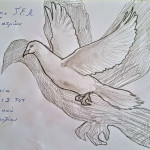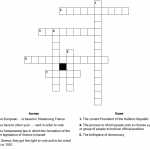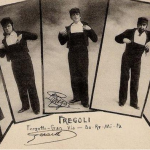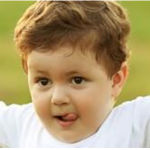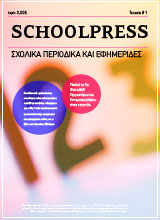By Lazana Georgia (A class)

One of the most widely debated issues is the exploitation of animals in circuses in order to entertain their audience! Despite the huge applause they get when one of their “impeccable” performances finishes, if people knew about the fact that trainers torture the animals because they want the performance to be perfect, they would never go to circuses again. If they knew that these animals (most of which are illegally taken from their natural habitat to be trained to amuse us) are being seriously harmed every time they are trained, circuses with animals would not even exist. It is highly unfair for animals to participate in such a procedure despite their will. What if the ones who have the title of “trainers” were themselves exposed to such a terrible procedure? What is really hidden under this fake beauty of spectacle? And what can we do so as to put an end to this horror?
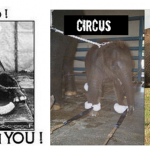
First of all, they are treated as real “puppets”, because trainers threaten them or make them follow their orders in a violent way, even if they do not want to. The majority of circus elephants are captured in the wild. These wild elephants walk as mamy as 40 miles a day while in their natural habitat. Once captured, they are chained in one place for up to 23 hours a day. Ringling Bros and Barnum & Bailey Circus brags that its three units travel more than 25,000 miles as the circus tours the country for 11 months each year. Ringling Bros’ own documents state that on average elephants are chained for more than 26 hours straight and are sometimes continually chained for as many as 60 to 100 hours. When the animals arrive at their next destination, instead of being let off the railway cars immediately after arriving at the arena, they are sometimes forced to remain inside for hours despite extreme temperatures. If this isn’t a real torture… We realise that there is no HUMANITY in such practices!
There is something that we have to keep in mind: ANIMALS DO HAVE RIGHTS AND WE HAVE TO RESPECT THEM!

In addition, these animals who are too old to “work” or are sick and incapable of completing their trainer’s orders are abandoned, killed or even die before they usually do in their natural habitat. There are many cases when the animals are sold to be used for experiments, or die because of the fact that they are exploited, not fed or given water because their masters are not satisfied.
How unfair is to see these creatures who were born in the nature to be disgraced because they are obligated to follow orders? How pitiful it is to let “humans” torture animals? Sometimes I can see humans but NO humanity!!!

Οn the other hand,because of the concern about animal mistreatment, a growing number of communities are banning or restricting the use of animals in circuses. A great idea in order to ban circuses which use animals is for people not to visit them, to organize or attend a protest,
to support legislation protecting circus animals, or to report any possible violations of state and local animal protection laws to the police and animal control groups.


Taking all these ideas and arguments into consideration, I personally believe that there is no living organism that truly deserves such a massive pain , such as the one that the circuses’ animals do. Animals have rights and all of us MUST respect them and not exploit them , because we think that we are more powerful , due to the fact that sometimes animals take revenge . I highly take issue with the existence of circuses with animals , but there are no words that can describe the feelings of animals and the are exposed to terrible tortures . So we should perceive their feelings and take meters in order to endorse and protect them before it is too late !

Source:http://www.lcanimal.org/index.php/campaigns/animals-in-entertainment/circuses




